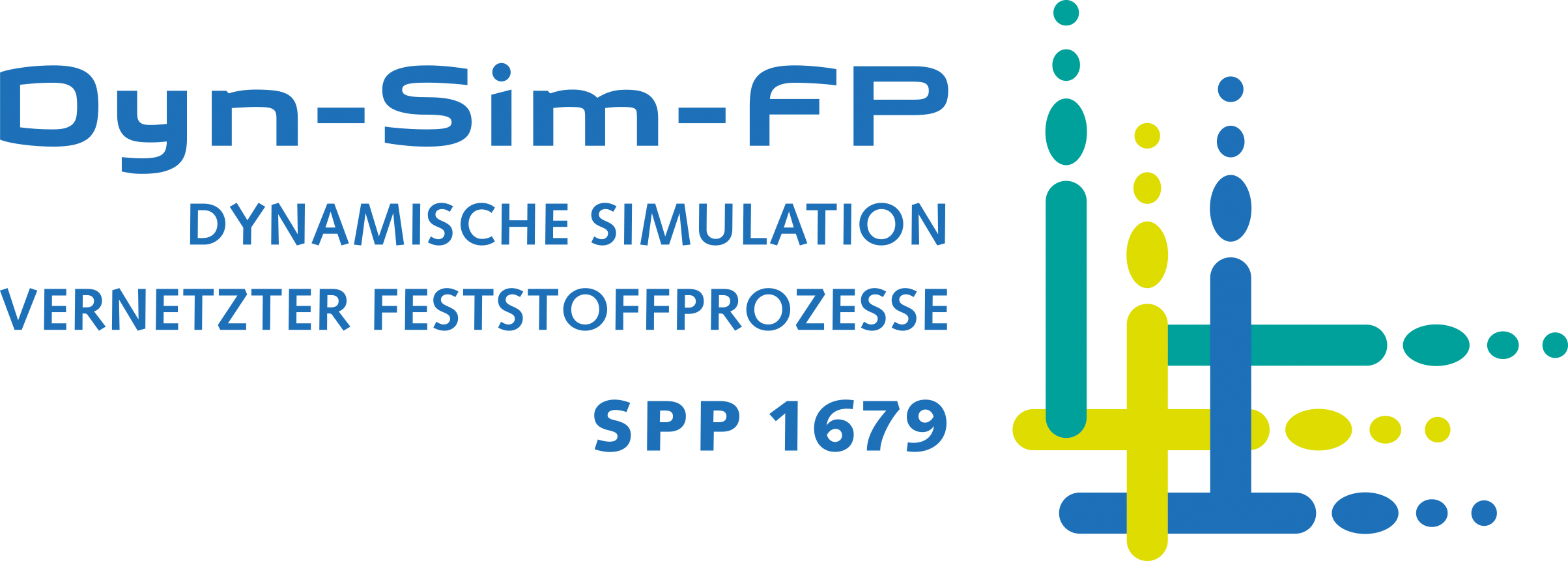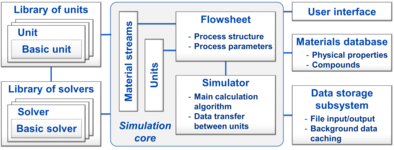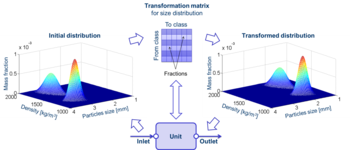Dynamic flowsheet simulation of interconnected solids processes, Central project
- Institute:
Institute of Solids Process Engineering and Particle Technology , Hamburg University of Technology
- Project leader:
Prof. Dr.-Ing. S. Heinrich, Hamburg University of Technology
- Researcher:
V. Skorych, M.Sc., Hamburg University of Technology
M. Buchholz, M.Sc., Hamburg University of Technology
Project objective
Solids processing technology operates with production processes, which often have very complex structures and consist of several relatively independent sub-processes and apparatuses, connected to each other by the streams of material and information. Such interconnection of separate components has a decisive influence on their dynamic behaviour and stability. Therefore, the comprehensive investigation of these systems is an important task at the stage of their design, testing and optimization. But to simulate such interconnected processes, to optimize them and to develop control strategies the investigation of the whole processes, rather than its individual entities, should be performed.
The flowsheet simulation is one of the powerful mechanisms for solving this task, allowing performing analysis of different parameters of the whole process. By using flowsheet approach each specific model on the scheme describes a certain industrial apparatus or a part of it. The possibility of arbitrary combination of these different models into a single structure using material streams allows investigation of various complex processes.
Therefore, the development of a flowsheet simulation system Dyssol (an acronym for DYnamic Simulation of SOLids processes), intended for the dynamic modelling of industrial production processes, has been started. A novel dynamic simulation system, as the central project of the priority program, should be designed to integrate models, algorithms and methods developed within different projects of the whole SPP. The system must be able to handle processes with complex structures, considering solid, liquid and gas phases as well as their arbitrary mixtures.
Work program
The simulation framework Dyssol is written in C++ programming language and has an object-oriented architecture, where the whole system is divided into several relatively independent parts, connected to each other by specified interfaces. To maximize the modularity of the system, the models of units and solvers are not directly integrated into the framework, but may be implemented as separate objects and afterwards added to the libraries.
The new system is based on the sequential-modular approach, where each model is calculated separately and obtained results are transferred between units according to the flowsheet structure. It makes possible to use simultaneously multiple specialized solvers and calculation procedures for the calculation of a flowsheet, and easily extend the unit’s library with new models.
Dynamic calculations in the system are based on the waveform relaxation method, where the total simulation time is divided into smaller intervals, and models are solved separately on them using some initial guess for the solution. To perform the calculation procedure all recycle streams must be found and provided with some initial parameters in order to transform a primary process structure into a topology without cycles. Thereafter, all units within the recycle block are calculated sequentially on the current time window. These calculations are performed iteratively until convergence is reached. As convergence criterion a difference between the values of parameters of tear streams on successive iterations are used. When the convergence is reached calculations proceed to the next time window. Extrapolated data obtained on the previous interval are used as initial values on the new time window. This algorithm is performed for the whole simulation time. The length of a time window is not constant and varies according to the number of simulation steps, which is needed to achieve convergence.
One of the main challenges of the simulation of solids processes is related to the dispersity of granular materials: the solid phase can be distributed along several interdependent distributed parameters such as size, shape, moisture content, density, etc. For correct handling of solids in this case an approach with transformation matrices is used. These matrices describe the mass flow, which passes from one class with certain combination of parameters into another class with another combination of parameters. Thus, instead of an explicit calculation of the model's parameters a transformation matrix can be generated and applied to obtain output stream in each unit. This concept allows preserving information about all parameters, even those which are not considered or not changed in a particular apparatus.




